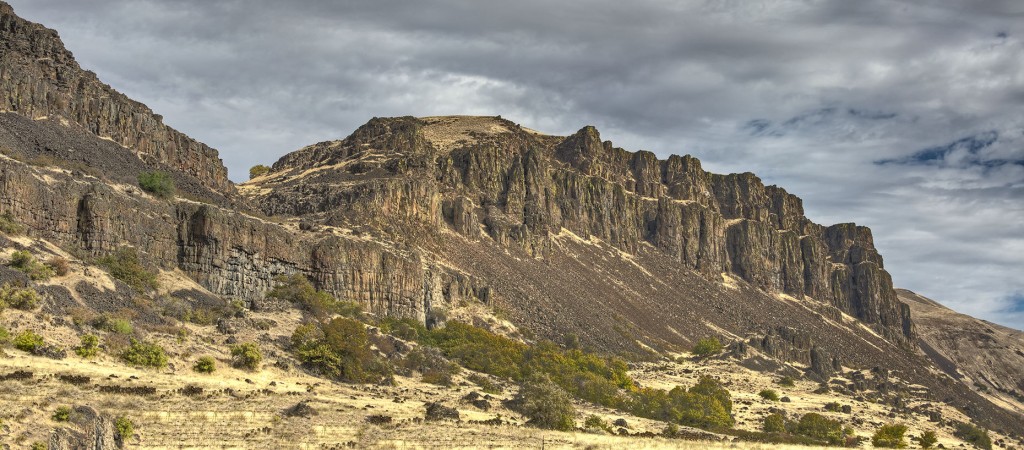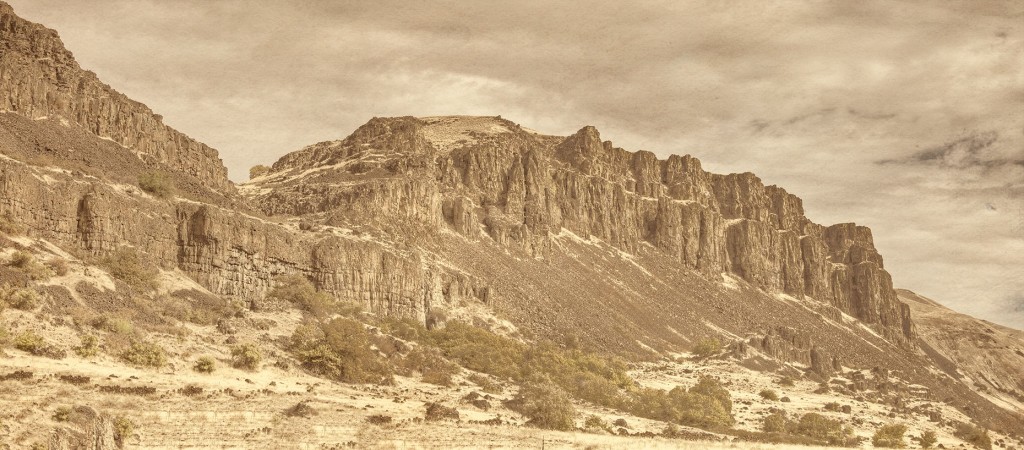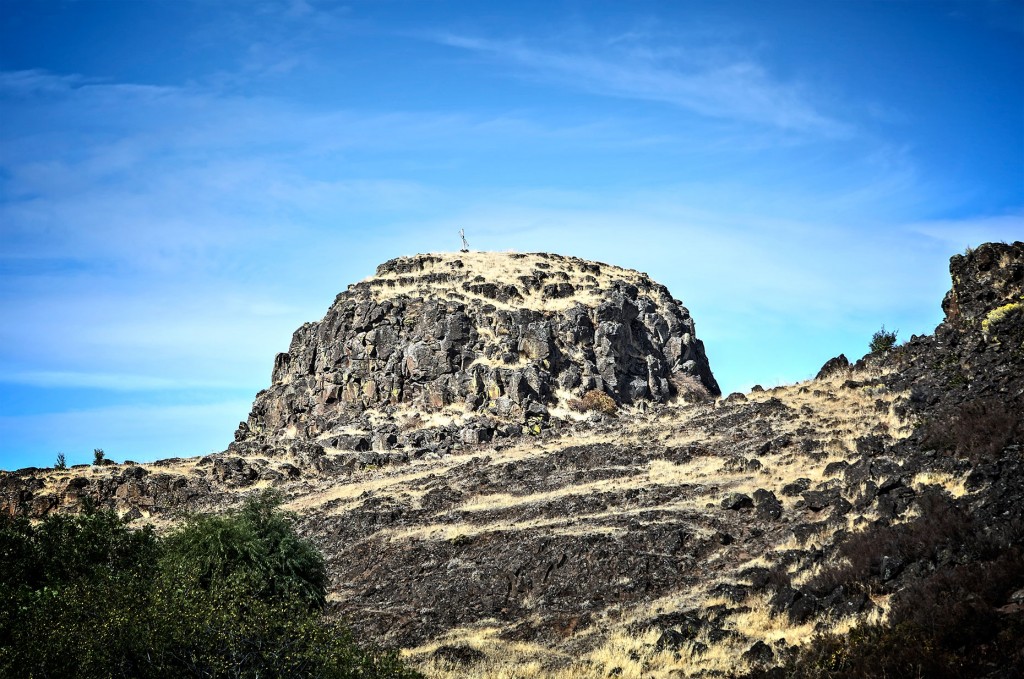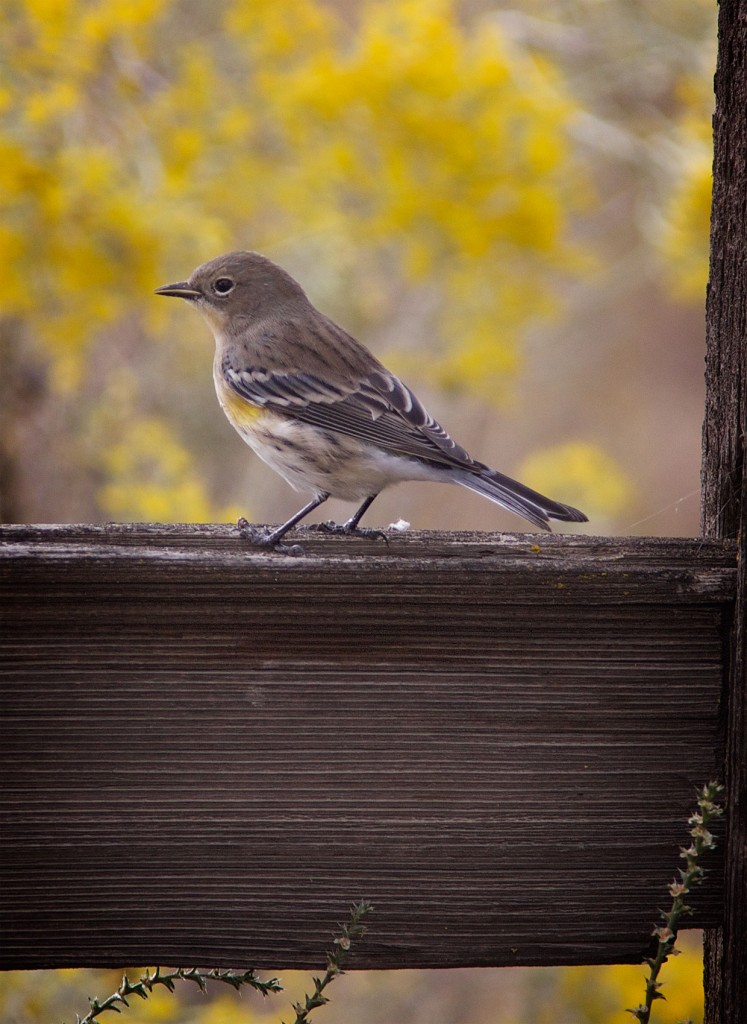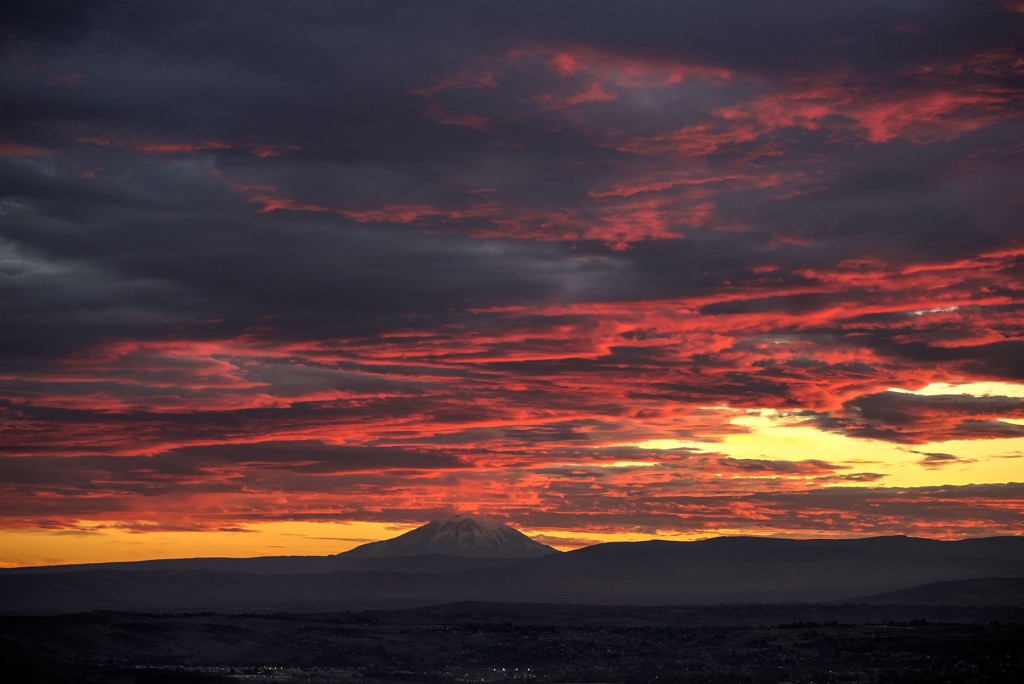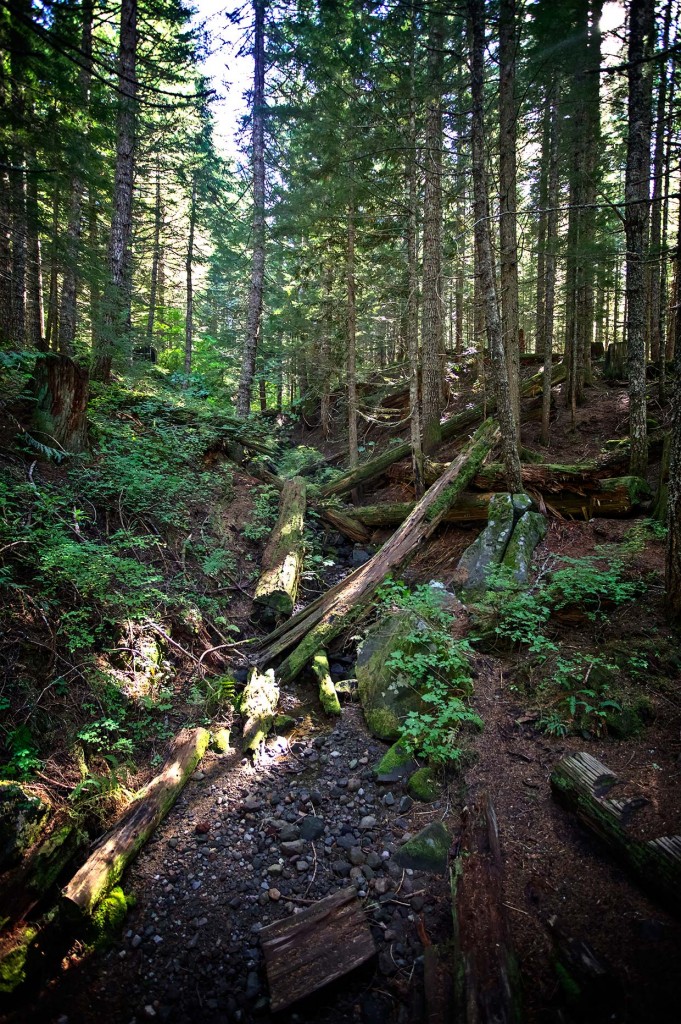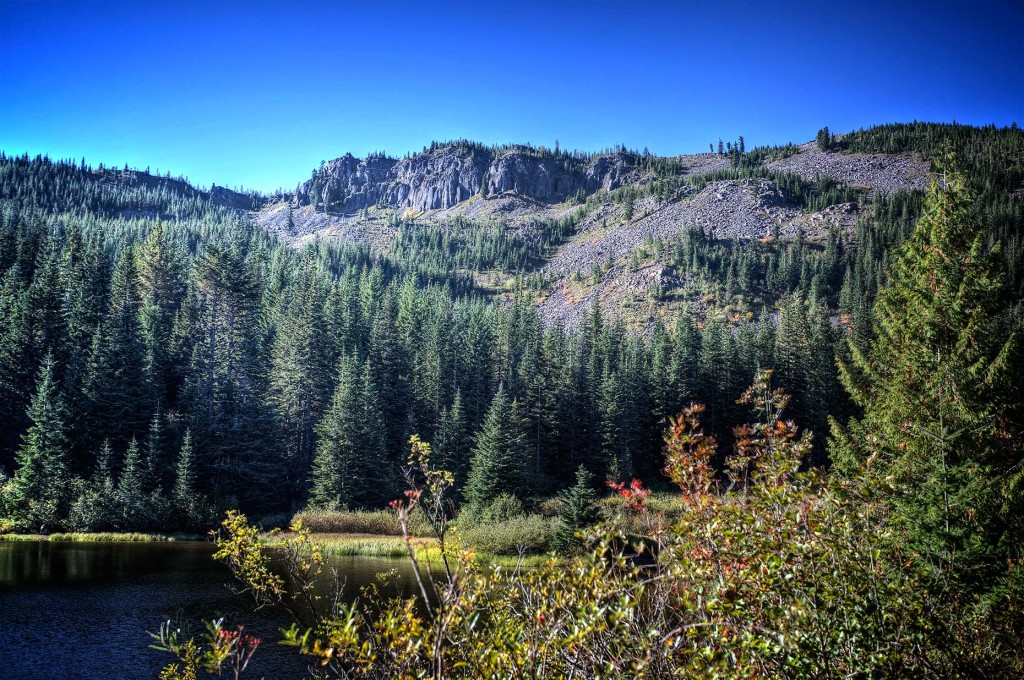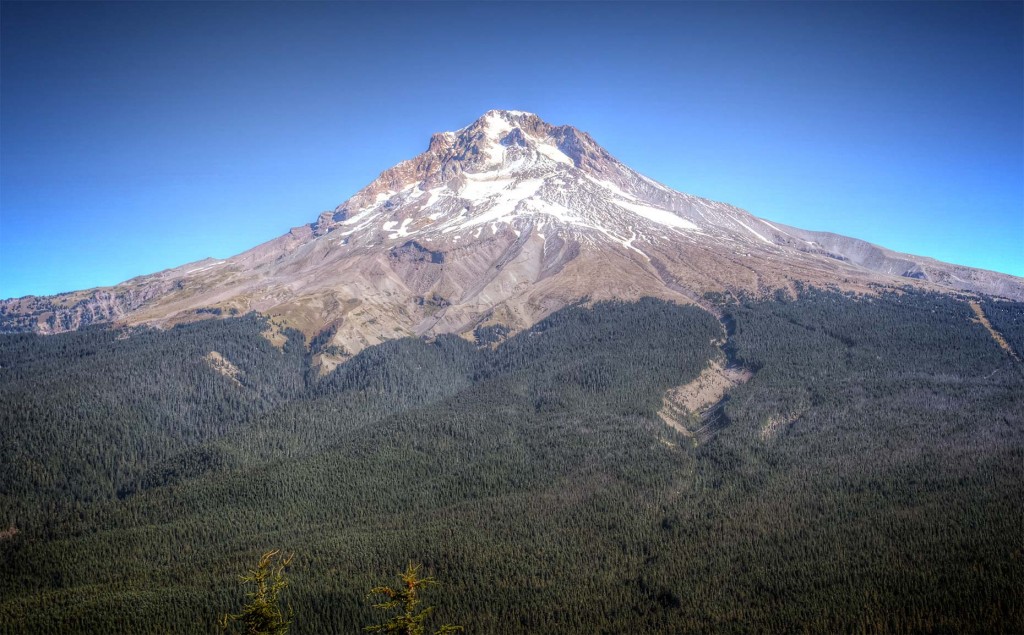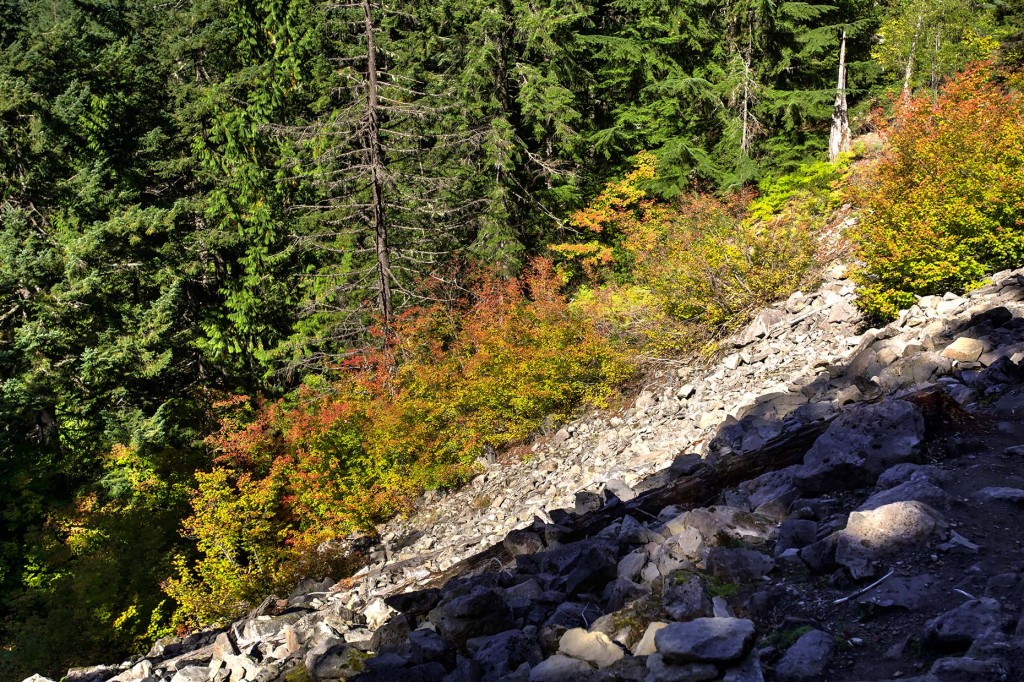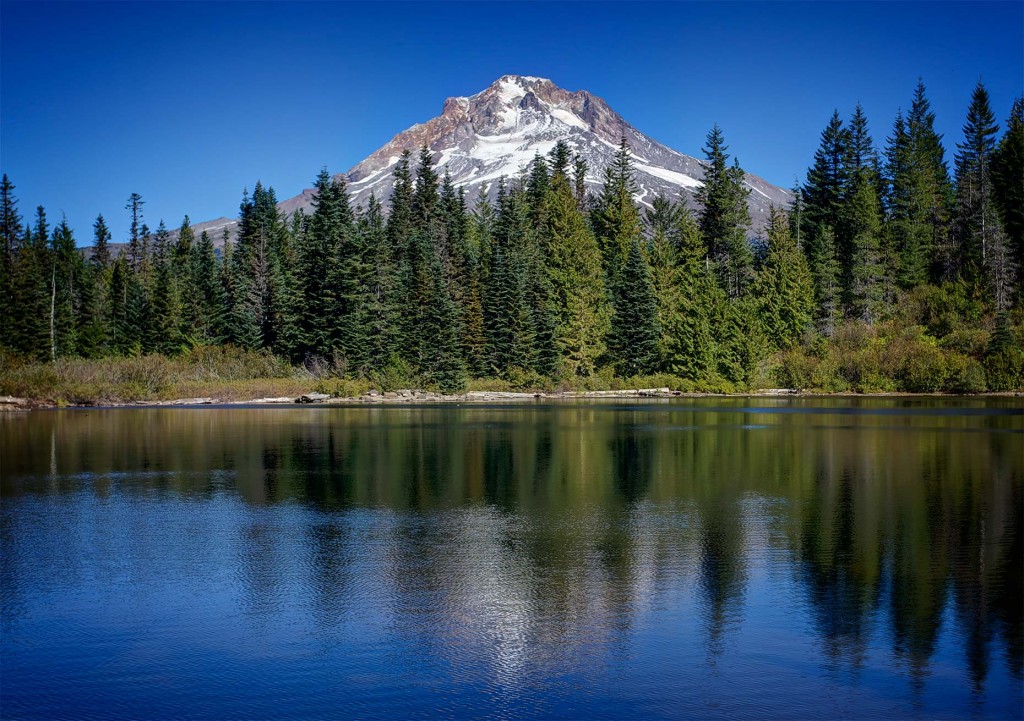The Indian petroglyphs featured at Horsethief Butte are a relatively recent discovery for me, but these rocky cliffs seem forever,
which perhaps explains why this Photoshopped version
seems more “realistic,” as it were, than the first photo. More often than not when my dad visited us on weekends when I was a kid we hiked through cliffs like this to reach the Klickitat river. These rocky cliffs took on an even more mythic quality while listening to my mother’s Uncle Fred retell his life-long adventures ranching and fishing around Goldendale, especially stories featuring rattlesnakes.
Heck, if I hadn’t heard so many tales about timber rattlers as a child I might even have hiked up to the top of this rock pile
to see if there was any explanation of the cross sitting atop of it.
Before I do that, though, I guess I should hike the trail to Horsethief Butte, something I would probably have done long ago
if the hike description didn’t shout watch for POISON OAK and RATTLESNAKES. I’m not sure which of those two I’m more afraid of, though I suspect the greatest danger is actually the poison oak since I had some nasty cases of that as a kid and I’ve never had a snake bite, despite having seen quite a few of them.
In retrospect I should probably have turned left at Biggs junction instead of driving all the way to the Umatilla National Wildlife Refuge because the only shot I got for my efforts was this one of a Yellow-Rumped Warbler.
I’d actually hoped to get a shot of some of the old rock walls I’d seen on previous trips, but either they had finally fallen down or been removed by current residents, for there was none to be seen. I guess I could have taken shots of the vineyards that seem to have taken over this part of the Gorge, but vineyards are all too common today.
Still, if I hadn’t made the drive to Umatilla I would have missed this beautiful sunset.
Even rain clouds can be beautiful given the right circumstances, I guess, though the threat of rain is what finally got me home a day earlier than I had planned.

